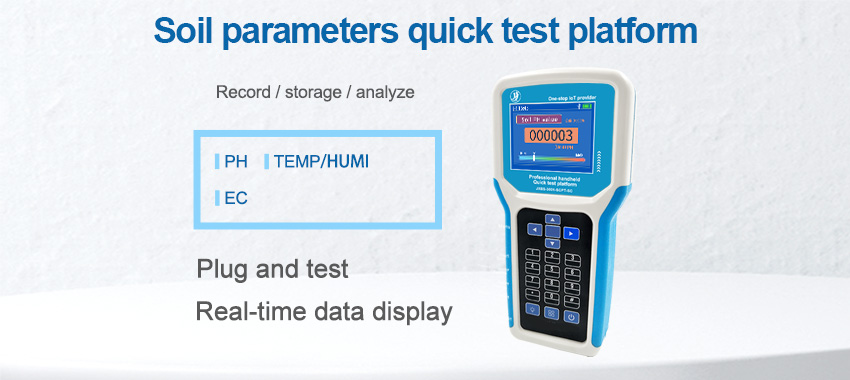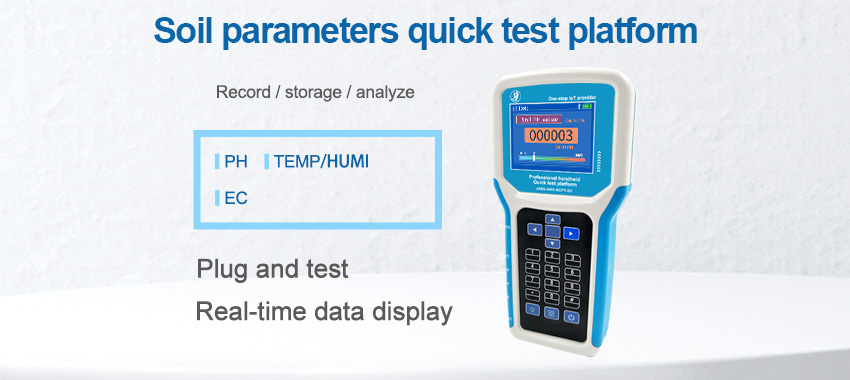In the ever-evolving world of agriculture, precision agriculture techniques are steadily gaining ground. Among these techniques, harnessing soil sensor data has emerged as a game-changer in enhancing crop yields and optimizing resource management. By utilizing soil sensors to gather critical data about soil conditions, farmers can make informed decisions regarding irrigation, fertilization, and overall crop management. In this article, we will explore how precision agriculture, fueled by soil sensor data, is revolutionizing farming practices, leading to higher crop yields.
The Role of Soil Sensors in Precision Agriculture
Soil sensors play a vital role in precision agriculture by providing real-time, accurate, and continuous data on various parameters within the soil. These parameters include moisture levels, temperature, nutrient content, pH levels, and more. By strategically placing soil sensors across fields, farmers can gather comprehensive information about the soil's health and variations in different areas. This data-driven approach allows farmers to make precise and timely decisions that optimize crop growth and resource utilization.

Collecting and Analyzing Soil Sensor Data
The first step in leveraging soil sensor data is collecting the necessary information. Soil sensors collect data from the soil and transmit it to a central database or platform. Farmers can access this data through computer systems or mobile applications. The collected data provides valuable insights into soil conditions, enabling farmers to monitor changes over time.
Analyzing soil sensor data involves employing advanced algorithms and statistical models. By scrutinizing patterns, trends, and correlations within the data, farmers can gain a deeper understanding of their fields. For example, analyzing moisture level data helps determine the optimal timing and frequency of irrigation, thus avoiding excessive or inadequate watering. Similarly, analyzing nutrient content data guides farmers in making precise decisions about fertilization, ensuring that crops receive the right nutrients at the right time.
Implementing Variable Rate Application
One of the key advantages of harnessing soil sensor data is the ability to implement variable rate application techniques. Instead of uniformly applying resources across an entire field, farmers can tailor their approach based on variations in soil conditions and crop requirements. Variable rate application optimizes resource utilization, reduces waste, and maximizes crop productivity.
By integrating soil sensor data with precision equipment, farmers can create detailed maps that highlight areas with specific needs. For example, if certain parts of a field have lower nutrient levels, fertilizers can be applied more heavily in those areas. By adapting resource allocation according to precise requirements, farmers can ensure each plant receives the ideal amount of input for optimal growth. As a result, crop yields are significantly enhanced, and costs associated with excessive resource usage are minimized.
Early Detection of Soil Health Issues
Soil sensor data not only aids in optimizing farming practices but also enables early detection of soil health issues. Continuous monitoring of soil parameters allows farmers to identify potential problems such as nutrient deficiencies, pH imbalances, or salinity fluctuations.
Early detection empowers farmers to take immediate corrective actions before these issues negatively impact crop growth. For instance, if soil sensor data reveals a nutrient deficiency, farmers can promptly adjust fertilization strategies to address the problem. Detecting and rectifying soil health issues at their early stages prevents yield losses and maintains crop vitality.
Integration with Other Technologies
The integration of soil sensor data with other cutting-edge technologies further enhances precision agriculture. Remote sensing techniques, such as aerial imagery or drones, provide additional data on crop health, stress levels, and pest infestations. By combining this information with soil sensor data, farmers gain a comprehensive understanding of field conditions, leading to more informed decision-making.

Weather forecasting is another valuable resource when integrated with soil sensor data. By incorporating weather predictions into their analysis, farmers can adapt irrigation and fertilization plans accordingly. They can optimize resource allocation based on forthcoming rainfall, humidity levels, or temperature changes. This integration helps ensure that crops receive the required inputs while minimizing resource waste.
The utilization of artificial intelligence (AI) and machine learning algorithms with soil sensor data analysis holds immense potential. These technologies can analyze historical data, identify patterns, and generate predictive models. Farmers can leverage these models to anticipate crop productivity, plan for the future, and make proactive decisio







